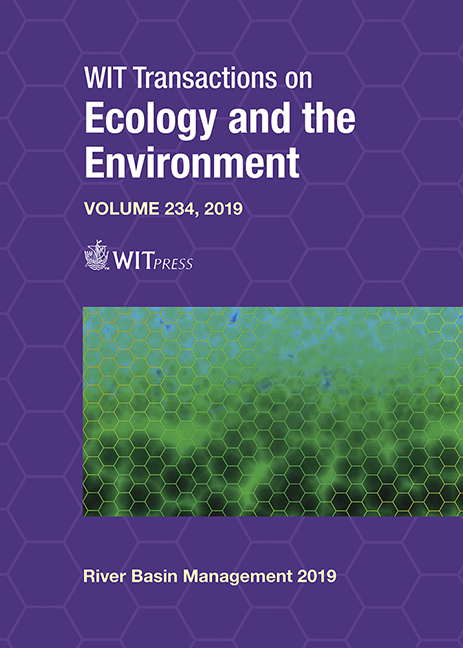ASSESSMENT OF DAILY INTAKE OF ARSENIC AND ASSOCIATED HEALTH RISKS FOR CHILDREN
Price
Free (open access)
Transaction
Volume
234
Pages
7
Page Range
193 - 199
Published
2019
Paper DOI
10.2495/RBM190191
Copyright
WIT Press
Author(s)
IMOKHAI T. TENEBE, PRAISEGOD C. EMENIKE, DIWA I. DANIEL, AIKUOLA OLUMUYIWA, CHUKWUKA CHIBUIKE DANIEL, OLUNUGA OLUWATOSIN GIDEON, ABRAHAM CHUKWUEBUKA, UMEH CHUBUIKE, EGBU-ETU EMMANUEL ETU
Abstract
Surface water is a major source of heavy metal contamination due to land use variabilities and can impair the health status of humans especially children when consumed. This study investigated the arsenic concentration in surface water of River Balogun in south-west Nigeria. Fifty-one samples were collected from 17 points along the river and were examined using inductively coupled plasma optical emission spectrophotometer (ICP–OES) for arsenic concentration levels and the potential of a risk due to prolonged exposures in children using average daily dose, and hazard quotient (HQ) indices were estimated. From this study, it revealed that the mean daily intake concentrations of arsenic for children were within the range of 0.0034–0.0068 mg/l and these values were below the standards for the World Health Organization. However, long term exposures could be injurious to the health of children as the HQ values were greater than one for all 51 samples. Therefore, continuous human health risk assessment, sensitization on the adverse effects on the overuse of agrochemicals in farms surrounding the rivers, intensified ecosystem services as well as best management practices for improvement of surface water in the region need to be adopted. Furthermore, elaborating on the dangers of high arsenic in water can also be a strategy in preventing children and other population groups from consuming contaminated surface waters in that vicinity.
Keywords
risk assessment, arsenic, pollution, heavy metals, dispersion, hazard quotient





